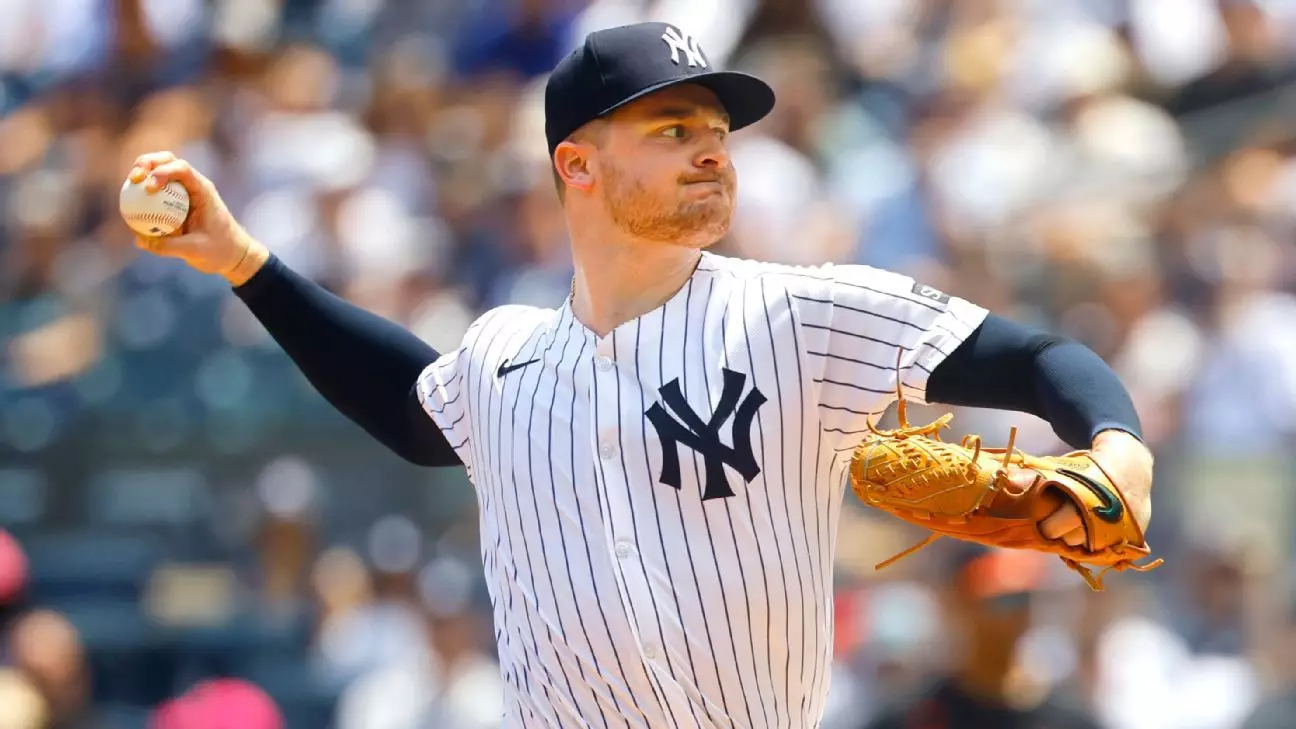Clarke Schmidt’s recent injury epitomizes the precarious state of the Yankees’ starting rotation—a fragile house of cards built on hope, inconsistency, and the relentless specter of injuries. Once considered a promising young pitcher with potential, Schmidt’s setbacks reveal a deeper systemic issue: the inability to sustain health and performance among key players. His torn ulnar collateral ligament is not merely a personal tragedy but a glaring reflection of the Yankees’ failure to develop resilient pitchers capable of withstanding the relentless grind of Major League Baseball. It underscores a harsh reality: talent alone is insufficient in a sport that demands durability, discipline, and a strategic approach to injury prevention.
The Consequences of Ignoring Structural Flaws
This injury isn’t an isolated incident; it’s part of a troubling trend that exposes the Yankees’ flawed player management and scouting strategies. The team has invested heavily in acquiring high-profile arms, yet consecutive seasons have been marred by injuries—Gerrit Cole’s Tommy John surgery, Luis Gil’s ongoing struggles with a lat injury, and now Schmidt’s. These issues are symptomatic of a deeper neglect for biomechanical conditioning, workload management, and perhaps an overemphasis on immediate success rather than long-term health. The Yankees appear to chase short-term wins at the expense of sustainable roster building. Ignoring these structural flaws will only deepen their vulnerability in the postseason, where every game demands dependable, healthy starters.
The High Cost of Inaction and Overreliance on Market Solutions
Faced with this injury epidemic, the Yankees’ instinctive solution is to cast a wide net through trades and market acquisitions. Such strategies can temporarily patch a leaky rotation but are ultimately band-aids on a festering wound. The decision to lean on veteran arms like Carlos Carrasco and lean heavily on prospects like Cam Schlittler reflects desperation rather than strategic planning. The impending deadline looms as a reckoning: will the Yankees finally acknowledge that internal reforms—be they in training regimens, pitching philosophies, or medical protocols—are necessary? Or will they continue to depend on market-based quick fixes that may yield short-term gains but leave long-term stability out of reach?
The Toll on Player Morale and Organizational Integrity
This relentless cycle of injuries does more than weaken the team on paper; it fractures morale and erodes organizational integrity. For players like Schmidt, who have worked tirelessly to prove themselves, injury signifies not just personal setback but also a symbolic failure of the franchise’s ability to safeguard its assets. Moreover, the constant churn of pitchers in and out of the lineup breeds a climate of uncertainty and frustration within the clubhouse. The Yankees’ culture must evolve from one fixated solely on stars to one that prioritizes athlete health, development, and resilience. Until then, their rotation will remain an ongoing catastrophe—a fragile glass house unable to withstand the slightest tremor.
The Road Ahead: A Test of Leadership and Vision
In the end, the Yankees’ inability to stabilize their starting rotation will test the leadership’s capacity for self-awareness and adaptation. The club’s front office and coaching staff must confront uncomfortable truths: that talent alone cannot compensate for negligence toward player health and development. Strategic investments in safer training practices, load management, and injury prevention are no longer optional—they are urgent imperatives. As the trade deadline approaches, the Yankees face a pivotal choice: continue relying on band-aid solutions or commit to a fundamental overhaul of their approach to pitching health and roster stability. The future of their season—and perhaps their organizational credibility—depends on it.

